32 Fruits That Start with the Letter P
When you buy through our links, The Breslin may earn an affiliate commission. Learn more
Fruits starting with P are more popular than you thought. They appear all over the world, in many different cuisines. Isn’t it interesting to find out what they are? You may find some are familiar; whereas, some are exotic!
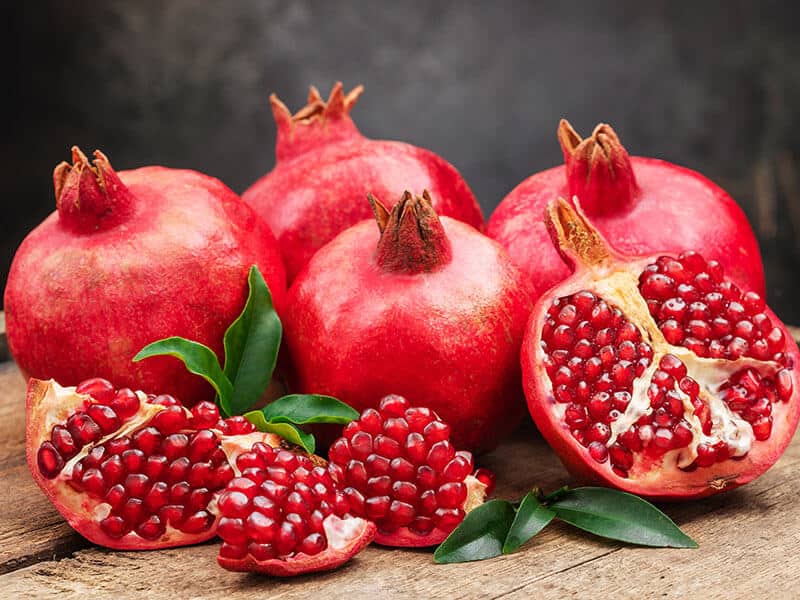
The more you learn about world cuisine, the more you understand about world’s cultures. So, why not choose fruits that start with P for new things to learn about? It may help you have some new ideas for tomorrow’s menu.
There Are Plenty Of Fruits That Start With P
I made a list based on the fruits’ initial origin to imagine where you have various fruits that start with P. Therefore, you can conveniently categorize with the type of dish you can try with these fruits. Believe me; they are more than you thought!
South America
- Pineapple
- Passion Fruit
- Peumo
- Peach Palm
- Physalis Fruit
- Pequi Fruit
- Pineberry Fruit
North America
- Papaya
- Prickly pear
- Pawpaw
- Pitaya
- Plumcot
- Pink Pearl Apple
- Ponderosa Lemon
Asia
- Pomegranate
- Persian Lime Fruit
- Palestinian Sweet Lime
- Pomelo
- Peach
- Persimmon
- Plum
- Plantains
- Phalsa
- Pulasan
- Ponkan
- Purple Mangosteen
European
- Pear
- Petit Rouge Grape
- Pinot Noir Grape
- Pinova Apple
Australasia
- Pigface Fruit
- Pacific Rose Apple
Now, let’s explore fruits that start with P around the world with my details below!
South America
There are many famous “P” fruits with tropical flavors that come from South America. All of them are so delicious and applied a lot in both the food and beverage fields.
1. Pineapple
Pineapple is originally from Brazil and Paraguay, then cultivated around the world. It’s one of the most popular tropical fruits in the world.
Pineapple has a fusion of sweet and a little bit citrus flavor, sometimes with a sour taste. It’s fruity and succulent. Pineapple is loaded with high nutrition but low on calories. Additionally, pineapples are usually used in both main dishes, side dishes, or desserts.
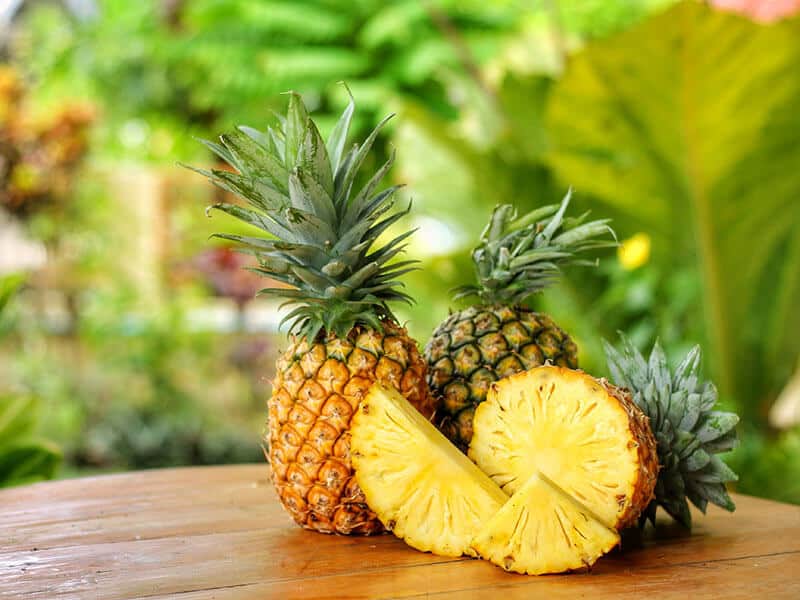
2. Passion Fruit
Passion fruit has many names in different parts of the world, such as lilikoi in Hawaii, sweet mountain cup in Jamaica, and Parcha Amarilla in Venezuela. This is one famous tropical fruit that originally comes from Argentina, Paraguay, and Brazil.
Underneath the tough rind of passion fruit, which can be yellow, purple, orange, and other colors, are transparent sacs filled with sweet, musky juice and edible seeds.
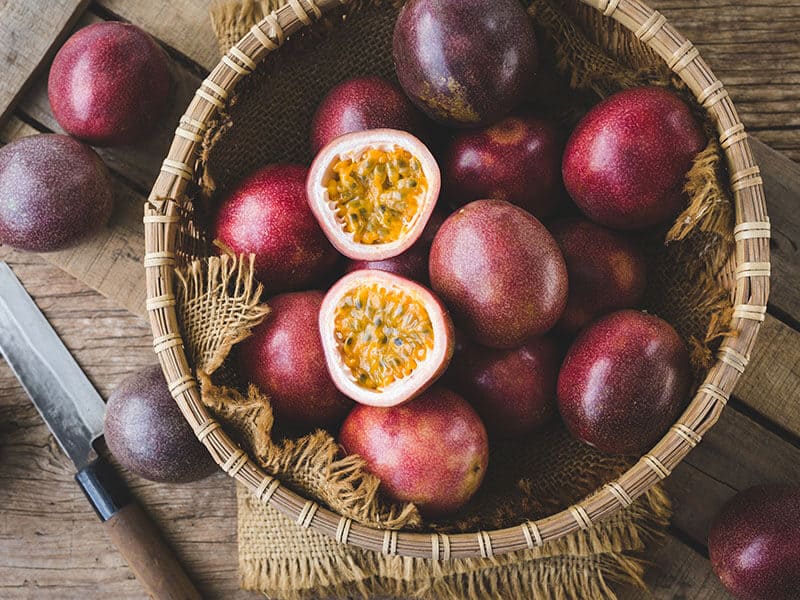
3. Peumo
Peumo fruit comes from the evergreen tree family, grown widely in Chile and Argentina’s wet and dry climatic conditions. The peumo fruit tree’s scientific name is Cryptocarya alba.
Peumo is an edible fruit. Besides being served as a fruit, Peumo is used to produce cosmetic and skincare products. Peumo is rich in many vitamins and minerals that are good for human health.
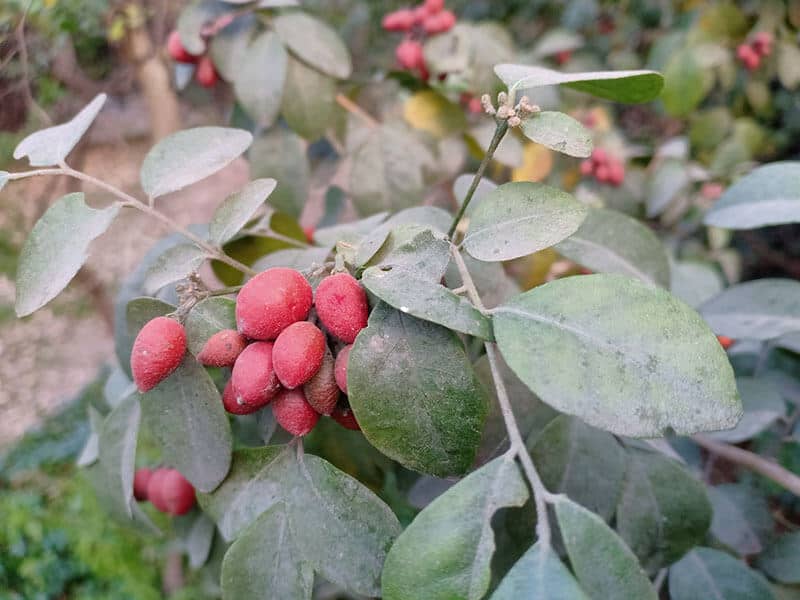
4. Peach Palm
Peach palm turns into purplish when it fully ripens. It has an oval shape about 1 to 2 inches in diameter. Its peel is thin and pulp, with a color of light orange when on the tree, dry, sweet, and mealy.
You can find peach palms in the tropical forest of South and Central America. Peach palms can be seed or seedless.
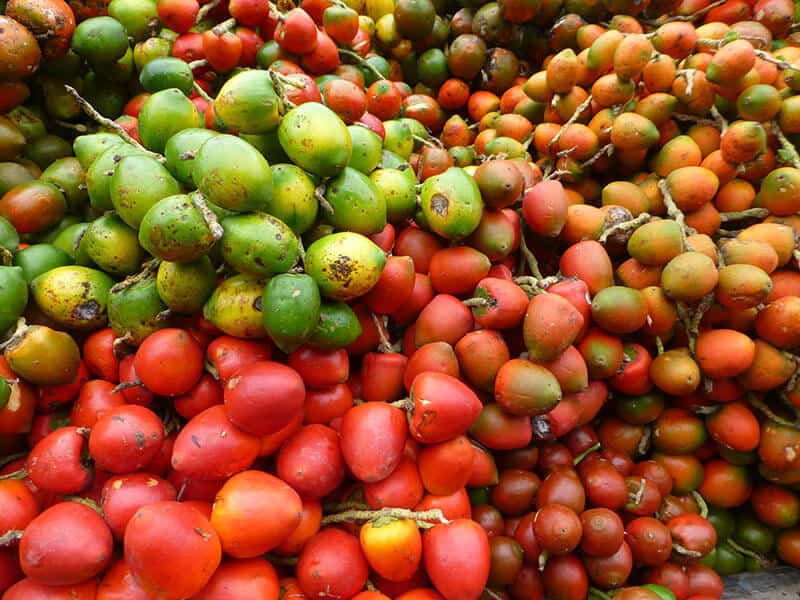
5. Physalis Fruit
Here is tasty food for you. Another name of physalis fruit is Aztec Berry or Goldenberry, a kind of fruit originating in Peru.
Physalis is a tart berry, resembling a tomatillo, wrapped beautifully in a papery case. From afar, the physalis fruit looks like a tiny Chinese lantern.
This berry has a unique flavor of tropical fruit. Its flash is so juicy and soft, working well with both sweet and savory dishes. Don’t you want to try a new recipe with physalis today?
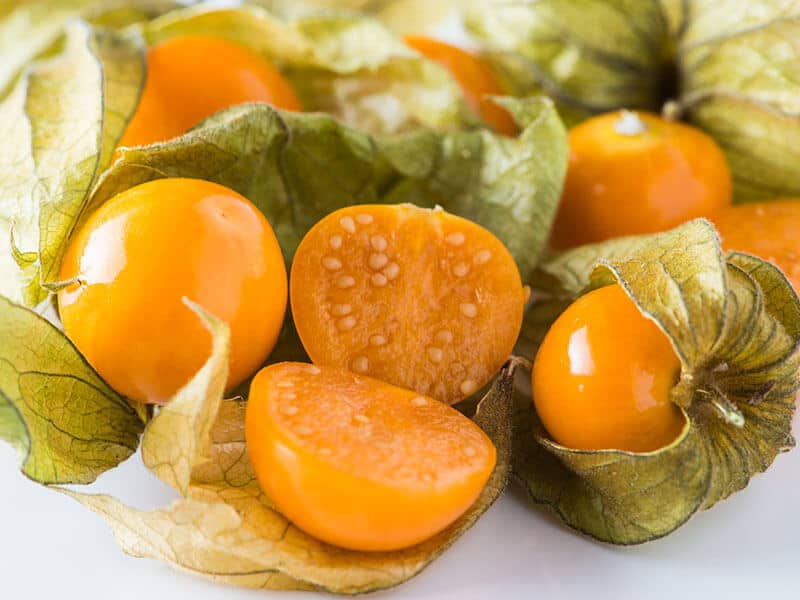
Physalis has a nickname called Chinese lantern because of its signature shape.
Get a closer look at this physalis fruit and an honest review about its taste.
6. Pequi Fruit
Pequi’s scientific name is Caryocar Brasiliense, or you can call it souari nut, an edible fruit native in Brazil. Ripe pequi fruit can have the size of an orange with the color of dark or light green.
Pequi has a unique flavor which is a combination of sweet, fruity, and cheesy flavors. Yes, this fruit has a cheese flavor. Because of that, Pequi is usually used for cooking many savory dishes rather than sweet ones. The typical meals of pequi you can find are Chicken with Pequi and Pequi Rice. Meanwhile, the nuts inside are often eaten in the same way as people eat roasted peanuts.
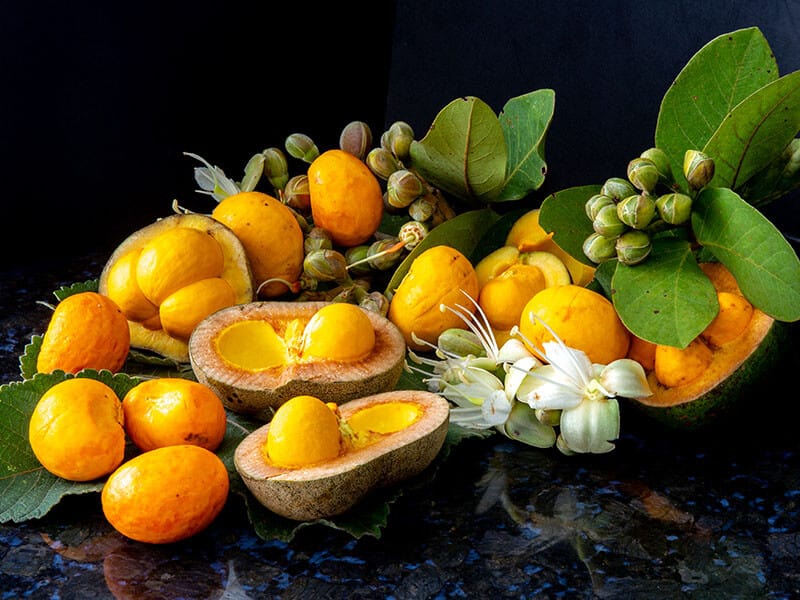
7. Pineberry Fruit
Pineberry fruit is a cultivar type that has an outlook of a strawberry, but with a pale pink or pale orange color. Sometimes, you can find it as white strawberry in the supermarket.
It is widely grown in some parts of Chile and North America. This fruit has a soft and juicy texture, quite like strawberries. The taste is quite similar, too: sweet and tart. It contains high vitamin A and C, which are perfect for health and immunity.
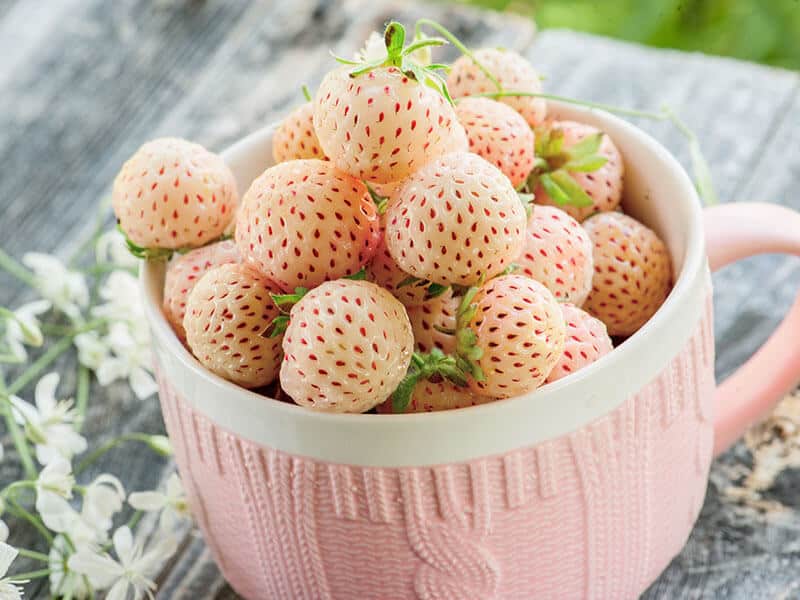
North America
Fruits that start with “p” from North America are mainly juicy with a sweet taste. They also contain many good nutrients for the body’s health.
8. Papaya
Papayas come from Central and Southern Mexico and are grown widely in hot and humid climates across the globe. When it ripes, it turns to orange or deep yellow color with a delightful and juicy taste. This fleshy fruit tastes subtly sweet.
Papayas are said to reduce menstrual pain and slow down the aging process of the body. They also contain the powerful enzyme papain, which is currently used in cosmetics, food additives, and herbal supplements.
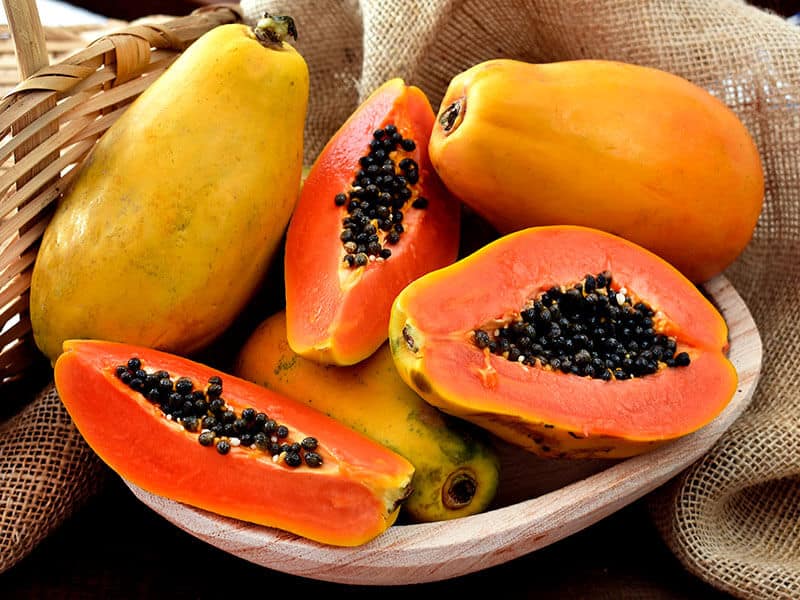
An ultimate guide to eating papaya deliciously.
9. Prickly Pear
Even the cactus has fruit. It’s called prickly pear (or you can call it Opuntia).
Prickly pears are native to the Americas and a part of Mexico. They have a honey-like taste, so the U.S citizens love it much. Their skin is red, green, or pale yellow. Moreover, they are a good source of vitamin C.
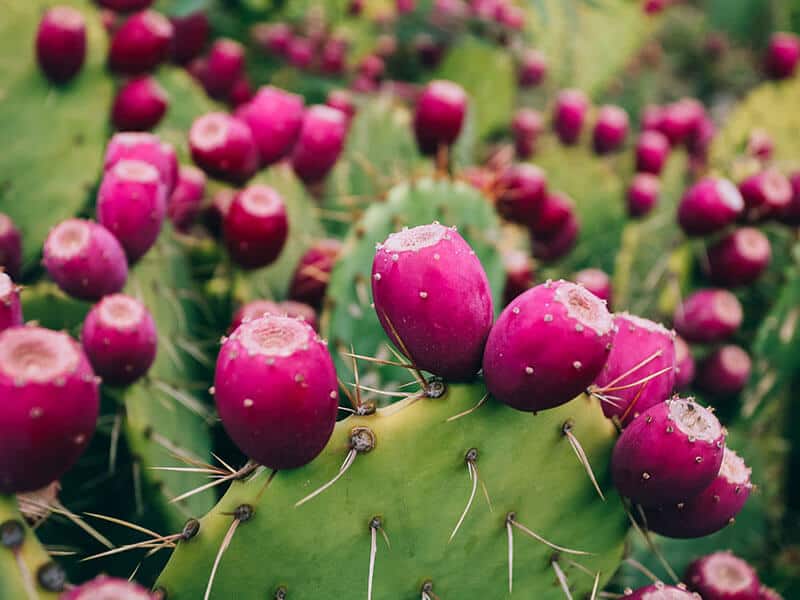
10. PawPaw
Many people think that pawpaw and papaya are the same kind of fruit with different names. However, they are different!
The nations of oblong-shaped fruit are the USA and Canada. Its usage is versatile. Not only being widely used in the food industry, but pawpaw extracts are also commonly added to medicines or beauty products as well.
Pawpaw is a unique fruit that has a taste of something between a mango, a banana, and a pineapple. There is vitamin C, magnesium, iron, copper, and manganese staying a lot inside this little green, pale fruit.
It is a nutritional powerhouse for anyone. Pawpaw is usually eaten raw to get its sweet, custard-like flavor initially.
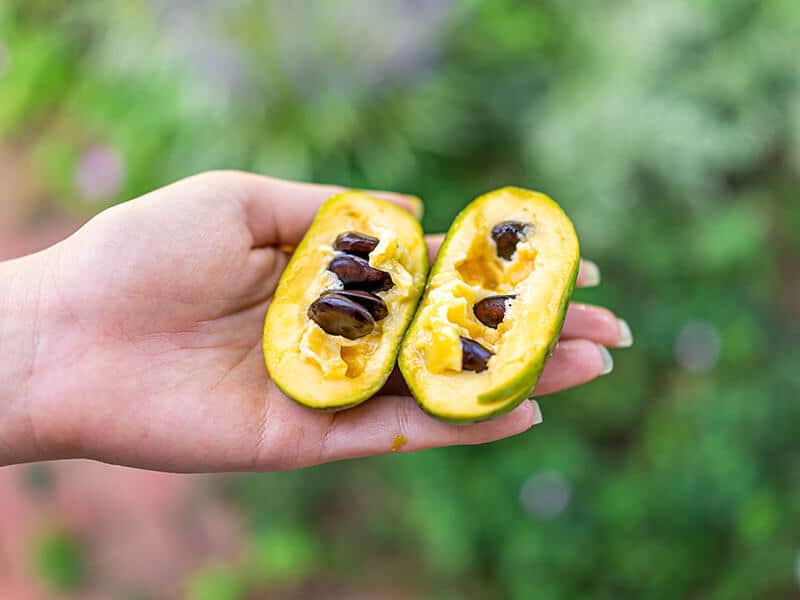
11. Pitaya
Pitaya (dragon fruit) is a fruit taken from a climbing cactus called Hylocereus. It appears a lot in tropical regions.
Pitaya has bright pink with green thorn-like leaves on the outside and white or dark pink flesh with black seeds inside. The juicy meat is what you can eat.
Pitaya is low in calories but rich in vitamins, minerals, and beneficial plant compounds. It can help various health supports.
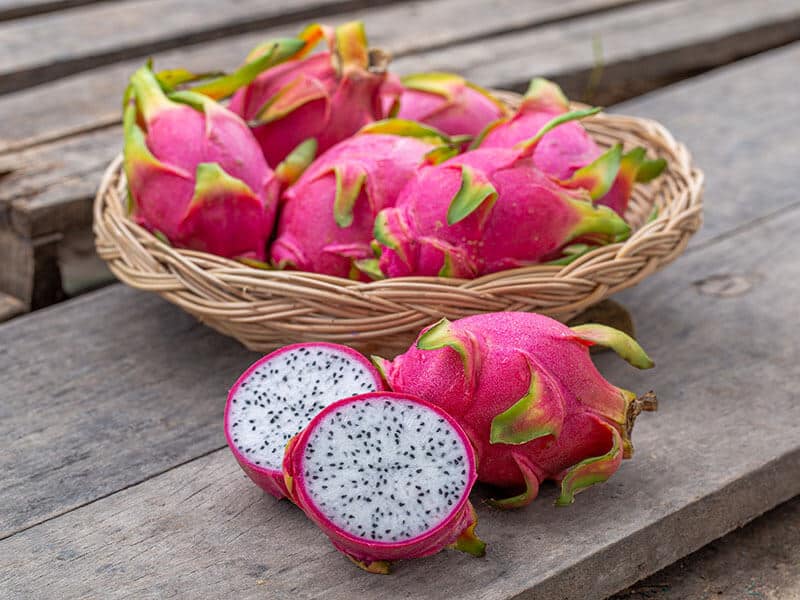
You can see this video to know more:
12. Plumcot
Plumcot fruit tree is a hybrid between plums and apricot. This fruit was first grown by a California fruit breeder named Floyd Zaiger. It first appeared on the market in 1989.
These plumcots contain great nutrition and are super low in fat. A plumcot provides a lot of vitamin A and vitamin C, which are suitable for your immunity and organ health function.
Since they can be both sour or sweet-tart flavors and nutritious, people use them a lot in cooking. You can find them in green salads, grain bowls, jams, or smoothies. Plumcot pie is always my favorite!
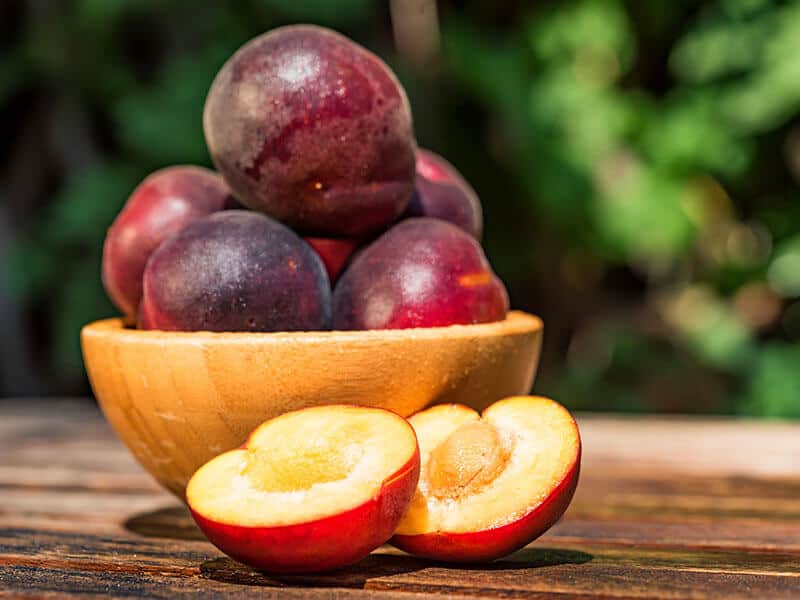
13. Pink Pearl Apple
Pink Pearl apple is a pink-fleshed apple type that first appeared in 1944. If you use a sharp apple core to cut it into pieces, you will see flesh with a bright rosy pink color, different from the standard cream color of other apples.
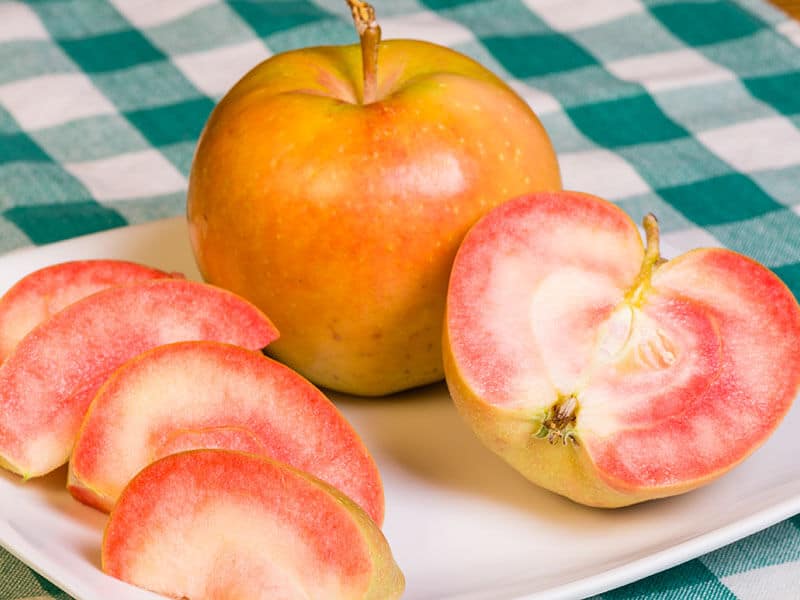
14. Ponderosa Lemon
Ponderosa lemon is a hybrid of pomelo and citron. This lemon can be used with lemons in any recipe, although it is not widely grown. A fully developed Ponderosa lemon can be as big as an orange and produce enough juice for several lemon meringue pies.
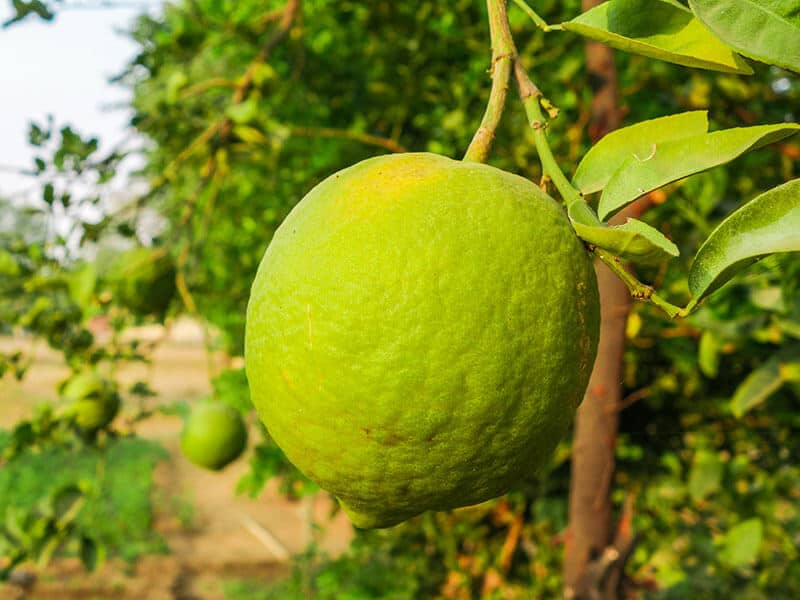
Asia
Coming from a different part of the world is Asian fruits that start with P. These fruits are primarily citrus types with super juicy flesh.
15. Pomegranate
Nowadays, Pomegranates are sold commonly in various fruit stores, supermarkets, or flea markets.
Pomegranate is called a “seeded apple”. The outside is hard with tough and leather skin with a mix of yellows, reds, and pinks on the surface. Meanwhile, the inside is sacs of fruit pulp that hold tart juice and edible seeds. You can enjoy it directly or make them into juice. This fruit is commonly used In many pomegranate recipes, particularly in salads.
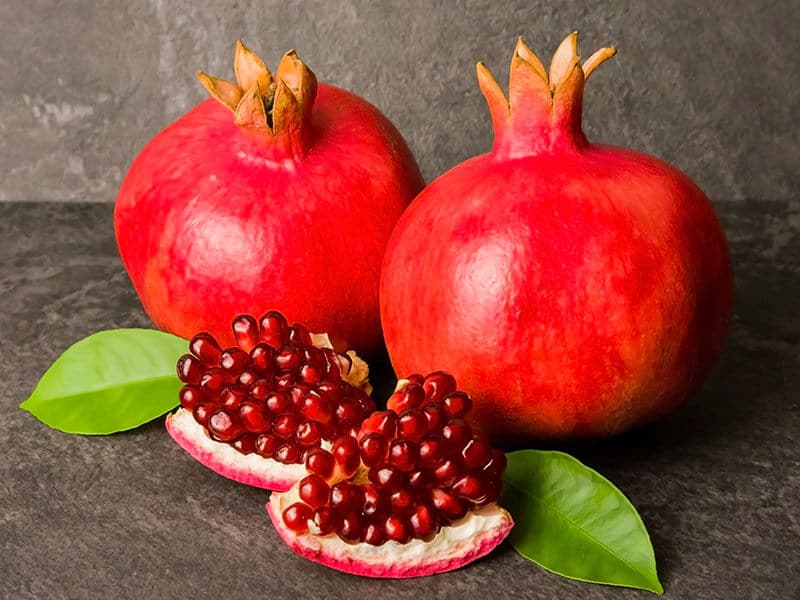
16. Persian Lime Fruit
Persian lime, or you can call it seedless lime, Bearss lime, or Tahiti lime, is a citrus fruit standing somewhere between key lime and lemon.
Persian lime is most suitable to make beverages and seasoning for salads. It is an ingredient of many non-alcoholic and alcoholic drinks like daiquiris, Cuban mojitos, Brazilian caipirinhas, and traditional lemonades.
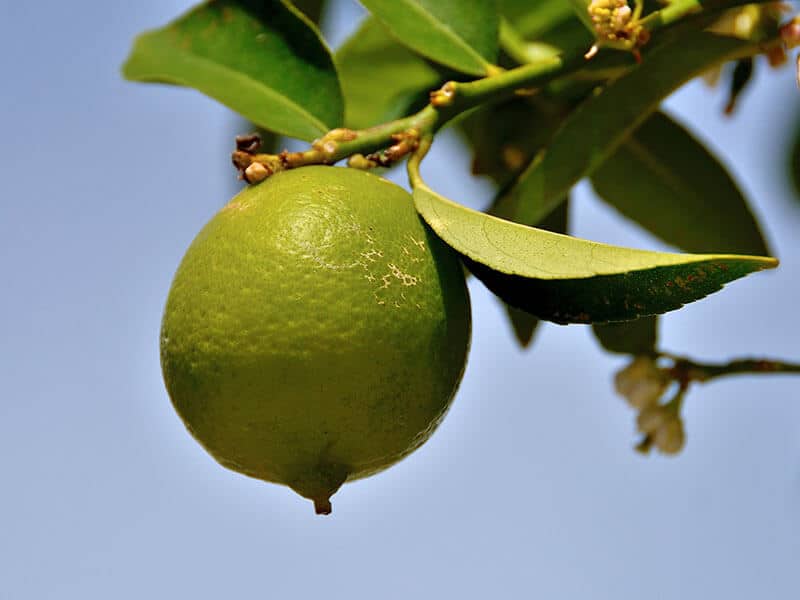
17. Palestinian Sweet Lime
Let me introduce with you another lime coming from Asian – Palestinian sweet lime.
Standing for its name, this Palestinian one is famous for its less sour taste than other lime in the world. It is suitable for those who can not stand for too much acidity in their meal while still enjoying the signature taste of this beautiful fruit.
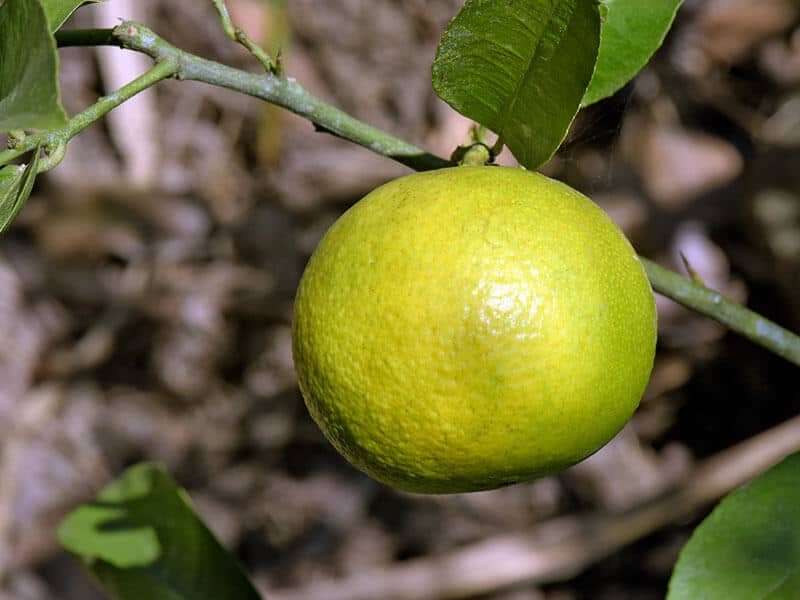
18. Pomelo
Pomelos (or Pummelos) are the ancestors of grapefruit. They initially come from Southeast Asia but then are grown around the world.
This Asian citrus fruit tastes similar to grapefruit. It ranges from sweet to sour. Pomelos is a citrus fruit rich in vitamins and minerals, protein and fiber, especially vitamin C. Therefore, it is preferred to be used in cooking. You can find many delicious salads made from pomelo.
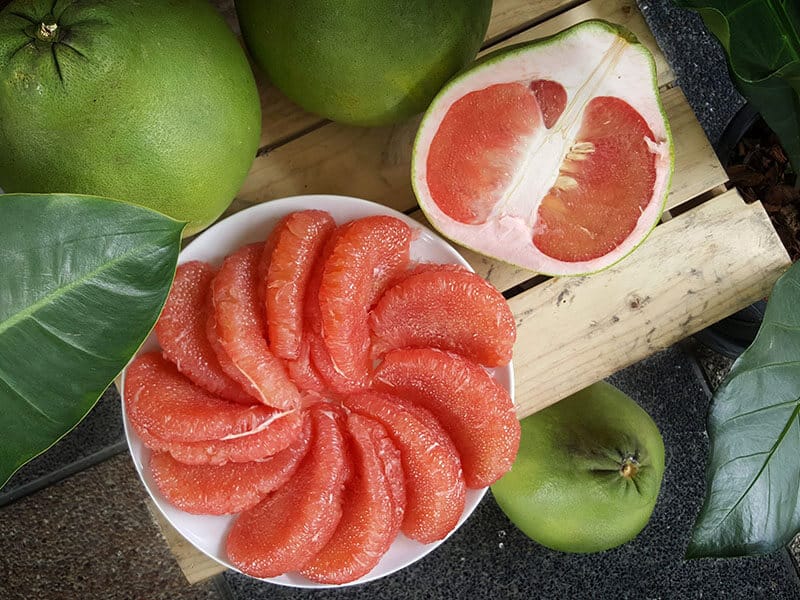
A Thai recipe made from pomelo for your weekend. You can see this video to know more:
19. Peach
Peaches are a large, pale orange fruit that has relatives with plum, apricots, and cherries.
Peaches have a unique sweet and tangy flavor and a good scent, which makes people addicted. This fruit goes well with every dish, especially those sweet treats. This is why you can find various recipes that use peaches as the main ingredient, such as Peach Tartlets, Peach Streusel Muffins, or Raspberry Peach Lemonade.
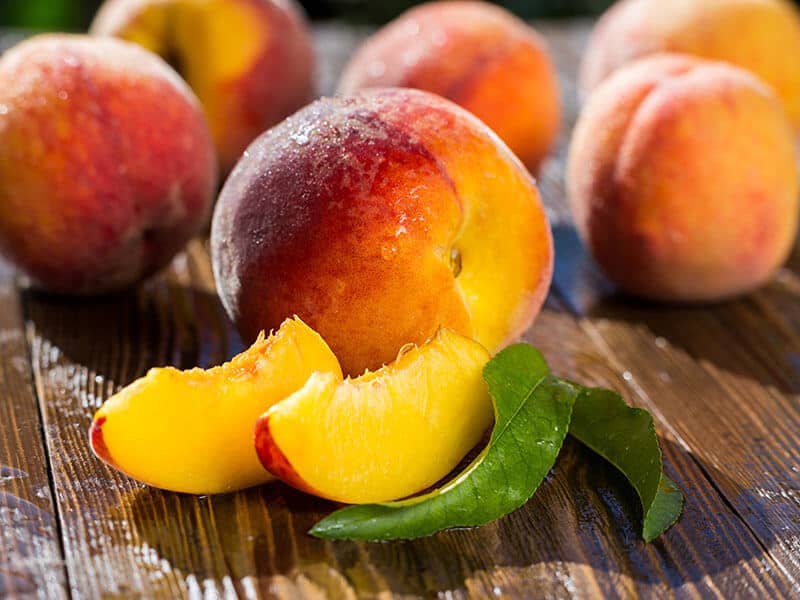
20. Persimmon
You can find persimmons in many countries in the world, but the most common persimmons right now are China natives. To enjoy persimmons, you have to wait until they are entirely ripened, which will make them soft, sweet, tangy, and has a honey-like flavor.
Persimmons can be eaten fresh or dried. Some suitable persimmon types are grown under a strict process. After that, they will be through a complex dehydration process to become dried persimmons.
These high-quality fruits are usually packed as a premium and meaningful gift in Asian countries like China, Japan, or Korea.
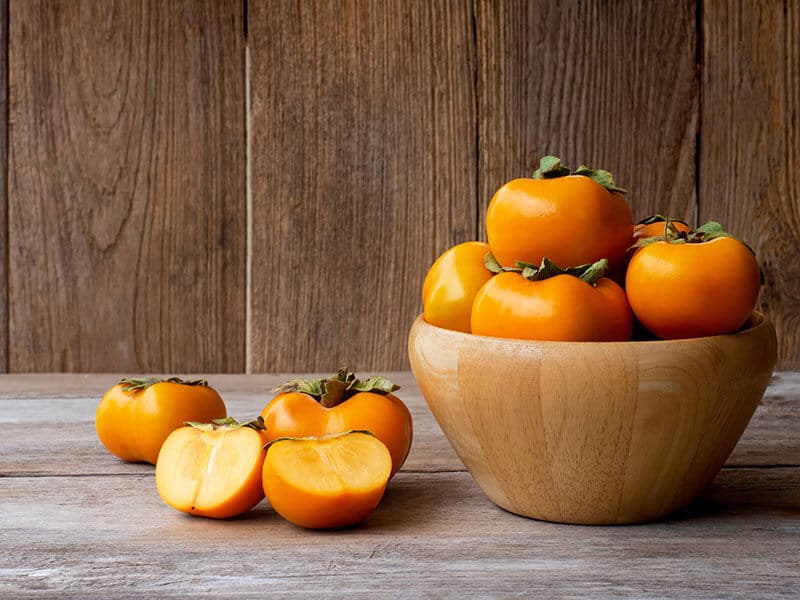
21. Plum
Plums are very nutritious and used in many different industries, from food to medicine or even beauty products. Plums are small and much similar to peaches or cherries. They have a dark red color outside with a juicy look. Besides, mature plums may have a dusty-white waxy coating.
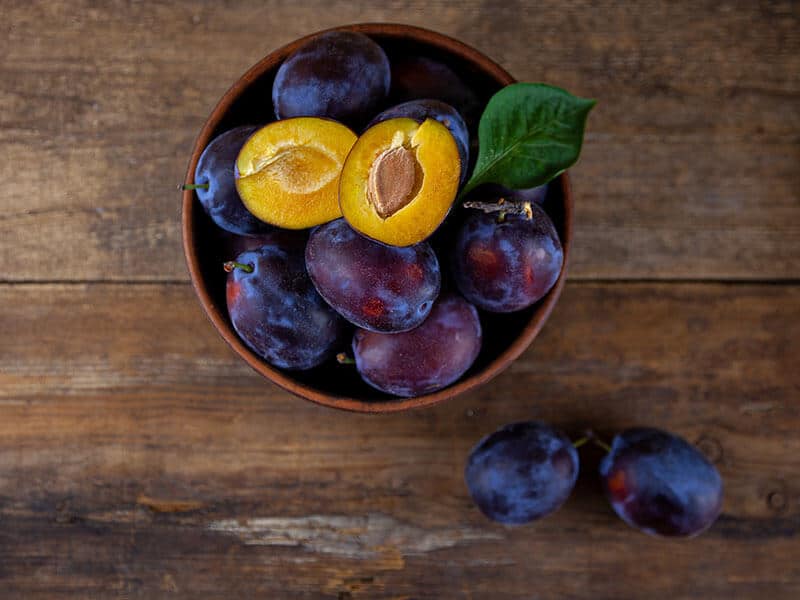
22. Plantains
In Asia, you will easily find bananas that have a long, thick cover with giant size. People call them “plantains”.
Although plantain is a type of banana, it has a very different taste inside. The flesh is starchy and not very sweet. Plantains are also a good source of complex carbohydrates, vitamins, and minerals. It supports health well.
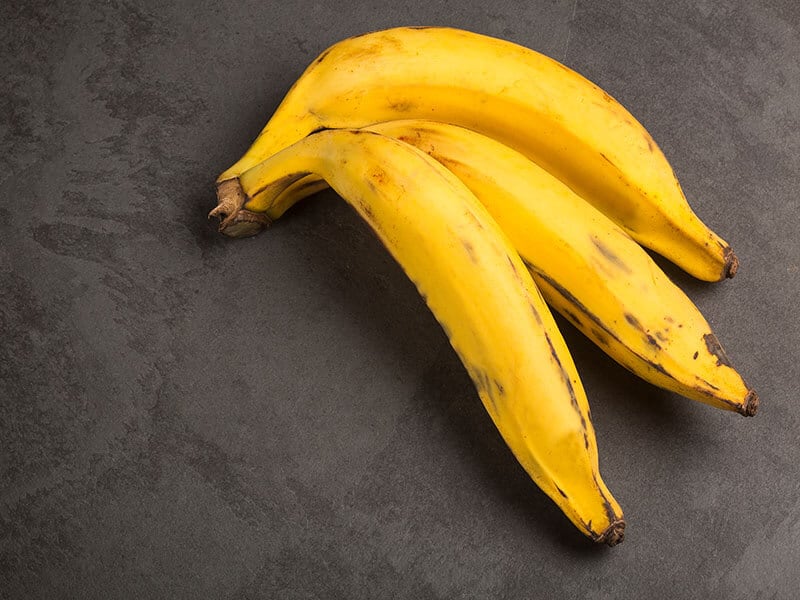
23. Phalsa
Phalsas (you can call them Falsa) are small berries grown on the Grewia asiatica tree, native to tropical southern Asia. Its scientific name is Grewia Subinaequalis.
When you see them purple-red or dark purple, it means they are ready to eat. The taste of Phalsa is sweet, sour, bitter with a hint of acid.
If you like to eat citrus fruit with sweet and sour flavor, you can try this phalsa. It contains a lot of vitamins, so it’s good for your health too.
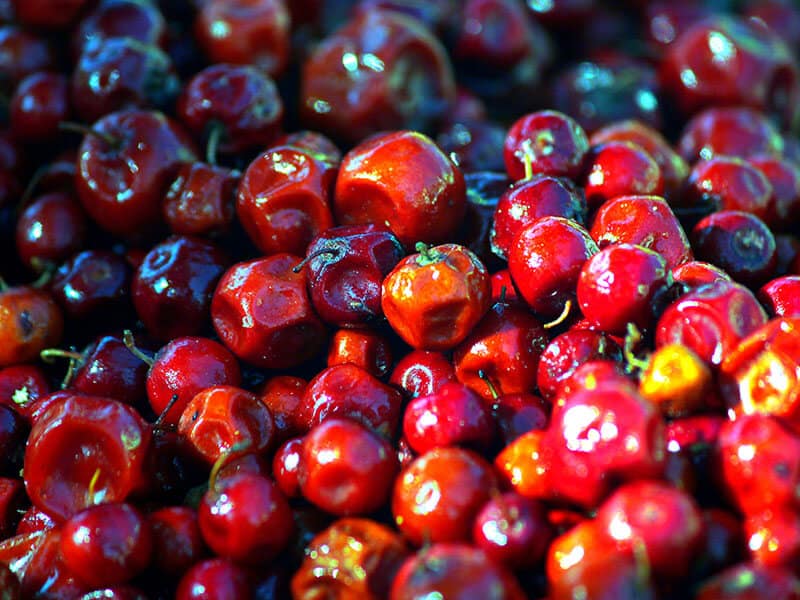
24. Pulasan
Pulasan is a sweet tropical fruit coming from Malaysia that you must try once in your life. This fruit has a small size, with an oval shape with red, leathery skin. When you open it, you will see transparent flesh with a delightfully sweet taste. This fruit is commonly eaten fresh.
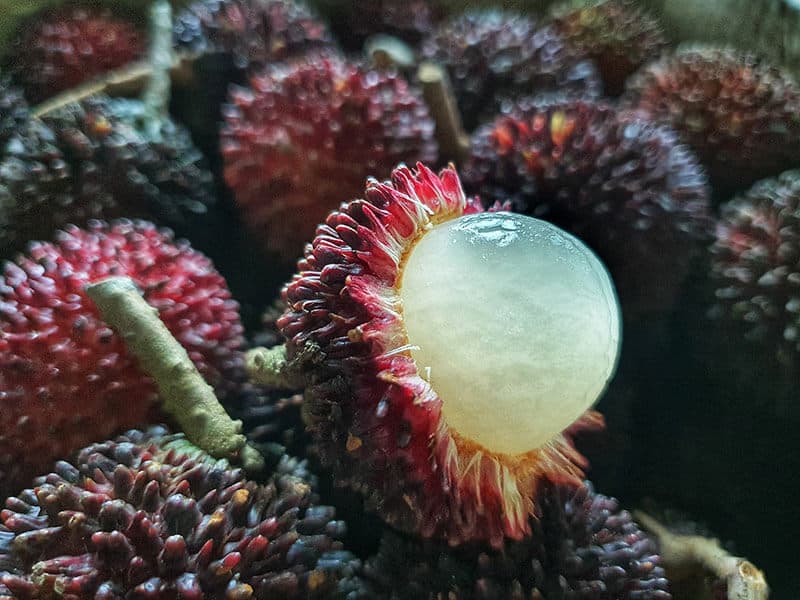
25. Ponkan
Another type of citrus fruit – ponkan.
You can easily find these hearty ponkans around the markets in Brazil, China, Japan, and the U.S. Ponkan is one of the oldest and most popular mandarin tangerines that you should try.
Its other name is Chinese honey orange, thanks to its sweet and delightful taste. Ponkan is loved to be used in making desserts or eating raw.
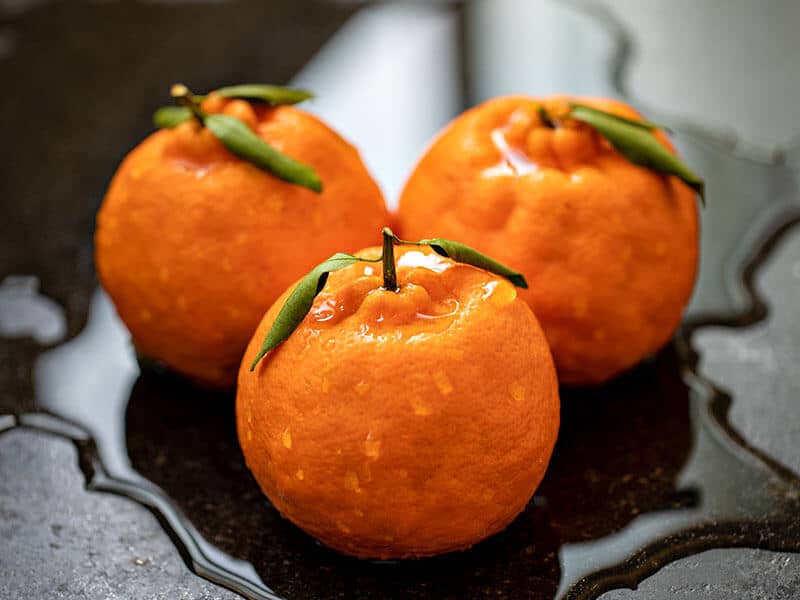
Let’s make some fresh ponkan juice bottles for hot days. You can see this video to know more:
26. Purple Mangosteen
This fruit widely appears in tropical lands. First, to appear in Southeast Asia, purple mangosteen now is legally imported to the U.S. This fruit is covered with a thick and quite hard peel which is inedible. The edible part is the white flesh inside.
This fruit is so delicious. You can eat it raw or combine it with other fruits to make a fresh and tasty fruit salad bowl. Purple mangosteen is usually seen in desserts or beverages like ice cream, jam, or mangosteen clafouti.
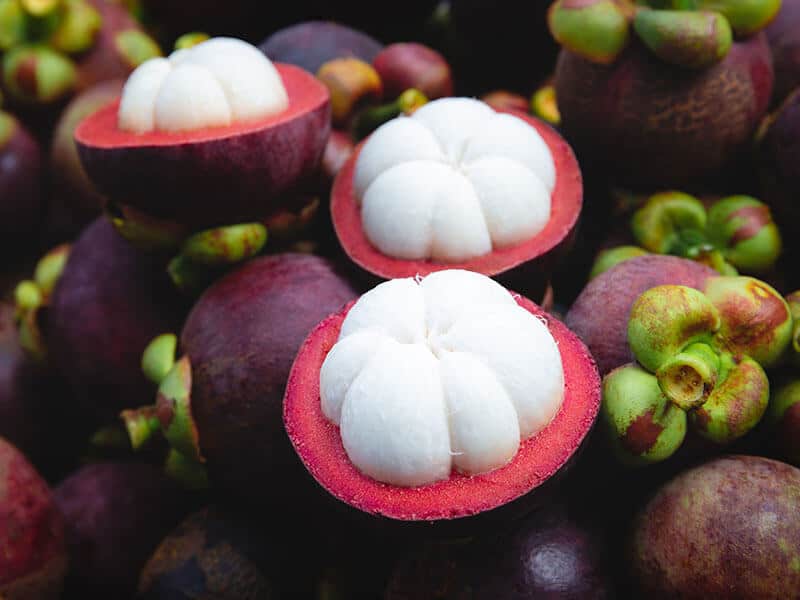
Europe
Besides Asia and America, Europe is a place that has fewer kinds of fruits that start with p. Nevertheless, they are all delicious. My review will contain pears, apples, and grapes. Are you mouthwatering now?
27. Pear
Northern and Southern hemispheres are places where you can find pears. I always love to have some taste of this wonderful fruit in the cozy weather of autumn. The sweetness from pears makes it perfect for autumn pear dessert recipes.
A pear is fat-free, cholesterol-free, and has only around 100 calories per fruit. Therefore, you don’t have to worry about your calorie intake while enjoying this hearty fruit in its season. Pear can be crispy and firm or soft and juicy. You can decide the level of pear sweetness based on how ripe they are.
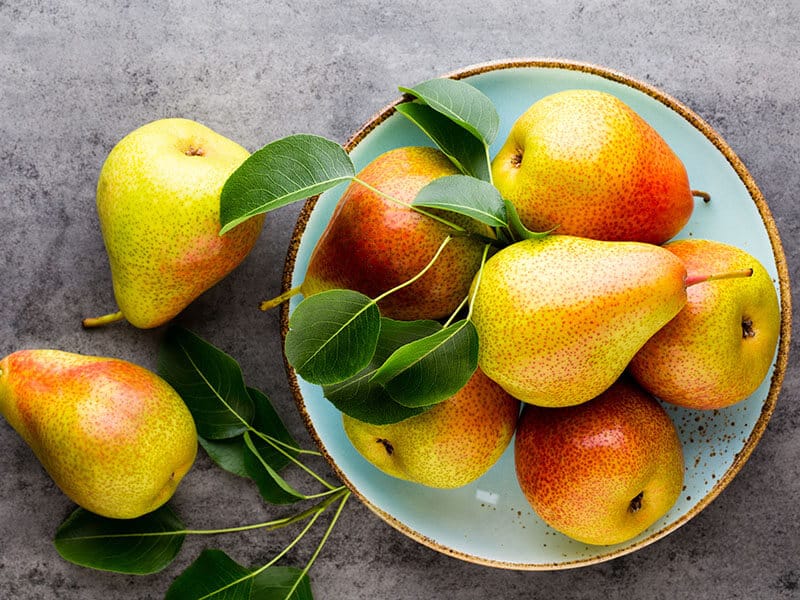
28. Petit Rouge Grape
Petit rouge grapes are grown popularly in Valle d’Aosta, Northwestern of Italy. Like other grapes, the Petit Rouge grape is also used to make wine. Thanks to petis rouge dark-skinned color, the wines made from these will have a red color with an intense and vivid aroma, relatively soft, and alcoholic taste.

29. Pinot Noir Grape
This is a French red grape with black color. Pinot Noir grape is one of the most popular grapes that are used to make wines. It is also used in making champagnes and sparkling white wines.
Pinot noir grapes can be used to make fresh juice, jams, or jellies (kids love grape jelly!). You can simply use it as fruit to eat with your dishes like salads or others.
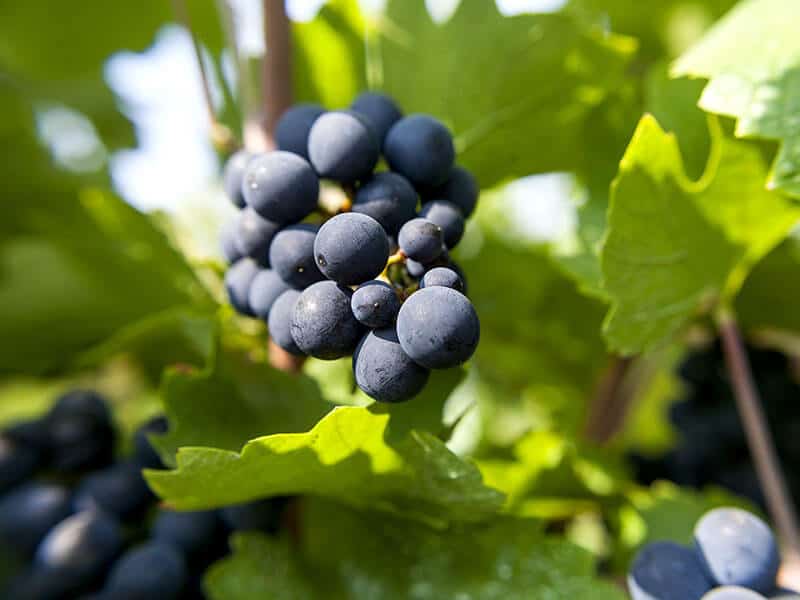
30. Pinova Apple
Pinova apple is a German apple cultivar that is commercially grown all over Europe now.
This fruit is a wholly aromatic apple with a fine pulp and a crispy texture. When it is in the right ripe condition, it has orange and banana aromas, with a subtle herbaceous and honey-like note. When its season peaks, I recommend you to buy some pounds and try to make apple juice mixed with vodka at home. You will be surprised that there are many delicious recipes.
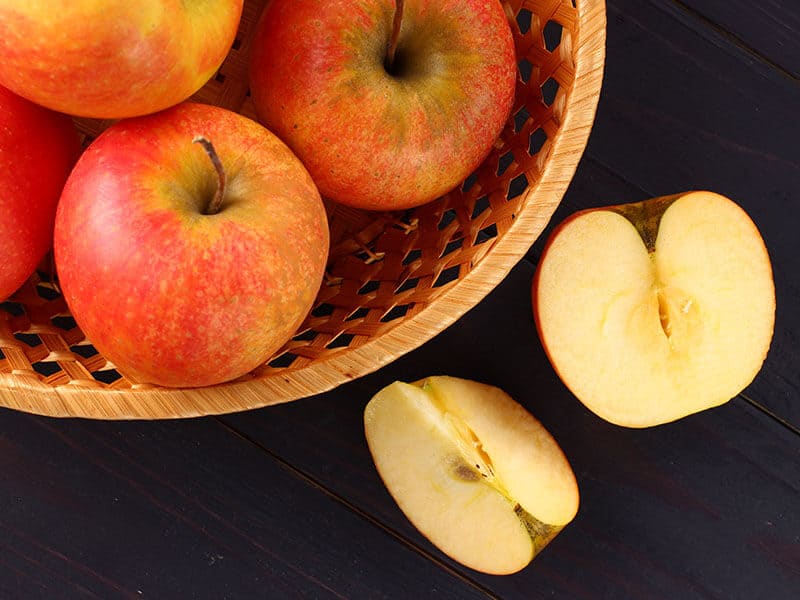
Australasia
Australasia has fewer fruits that start with p. However, I need to mention them in my post since they are amazingly delicious fruits!
31. Pigface Fruit
Carpobrotus glaucescens, commonly known as Pigface fruit, is an edible fruit. Despite its weird name, this fruit is delicious.
Pigface fruit’s taste is a combination of sweet, sour, and a bit of salty flavor. The texture is the same as strawberry’s texture.
It will be pretty hard to find the fresh version of these, if not during the season. However, you can find a lot of products made from pigface fruit like jams or jellies.
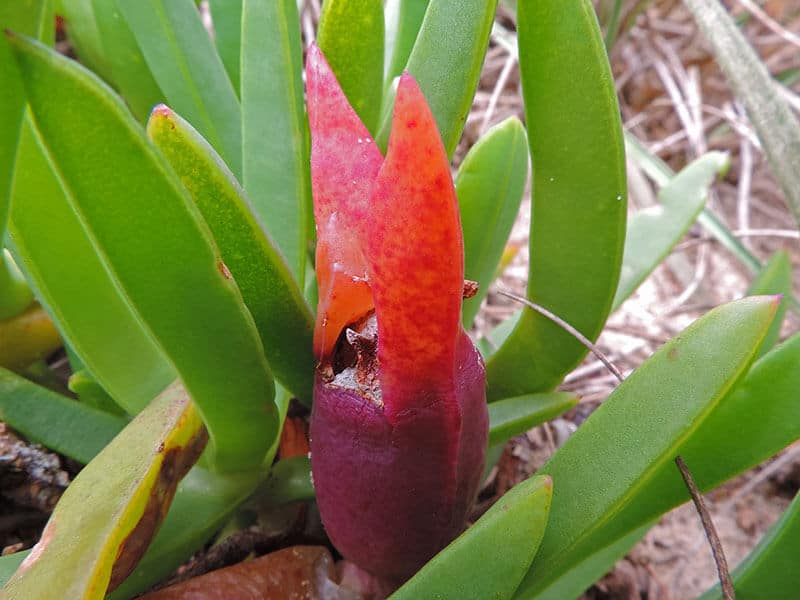
32. Pacific Rose Apple
Pacific rose apple is a type of domesticated apple, which comes from New Zealand. To compare, the Pacific Rose Apple has a very similar taste to the Fuji apple. Hence, this fruit is an ideal healthy snack for sweet tooth clubs.
You can easily spot a fresh Pacific rose apple by its light red appealing color outside and juicy with a crunchy texture inside.
Fruits That Start With P Are Diverse And Delicate That You Must Try Once
I hope that you can have an overview of fruits that start with p globally from my post. I strongly suggest you try these fruits once in your life. You can have it raw as a refreshing fruit plate or make some good dishes with these. Whatever way you will do, don’t forget to share with me your review after tasting them!
If you like my post, please like and share it with more people. I will come back soon with more food and recipes.

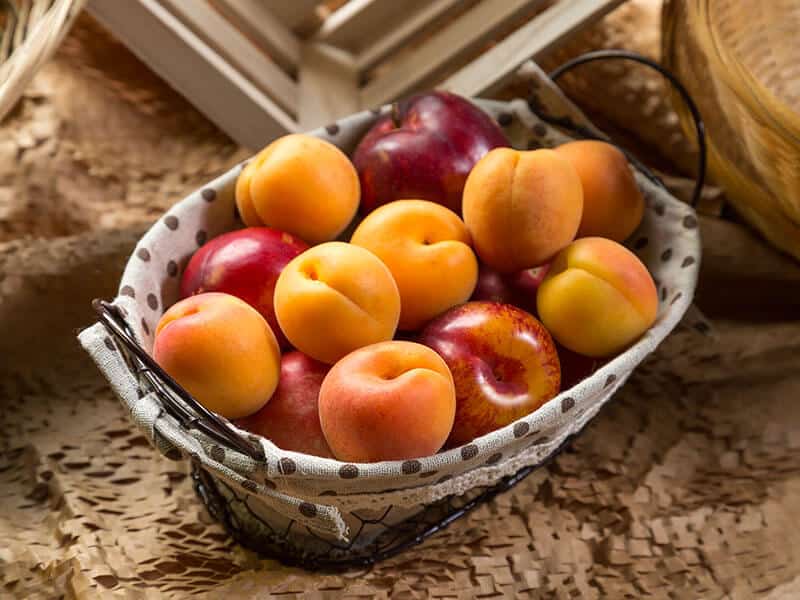






Amanda Collins
Founder and Senior Culinary Editor
Expertise
Culinary Arts and Management, Food Journalism and Critique, Recipe Development and Testing, Global Culinary Traditions, Sustainable Food Practices
Education
Institute of Culinary Education (ICE), New York, NY
Program: Diploma in Culinary Arts
Focus: Intensive hands-on training in culinary techniques, recipe development, and kitchen management, preparing students for professional roles in the culinary industry.
Monroe College, New Rochelle, NY
Program: Associate in Applied Science in Culinary Arts
Focus: Practical culinary skills, including cooking techniques, menu planning, and kitchen operations, with an emphasis on hands-on experience and industry standards.
Amanda Collins is a seasoned chef and food editor with a deep love for global flavors. Trained at the Institute of Culinary Education and Monroe College, and with over 15 years in the culinary field, Amanda has refined her skills in kitchens worldwide. Her background in food studies gives her a unique ability to share both recipes and the cultural stories that shape them.
As senior culinary editor at thebreslin.com, Amanda’s work brings authentic dishes to life, inviting readers to explore new flavors and techniques from around the globe. Her approachable style makes it easy for anyone to bring a bit of the world’s cuisine into their kitchen.